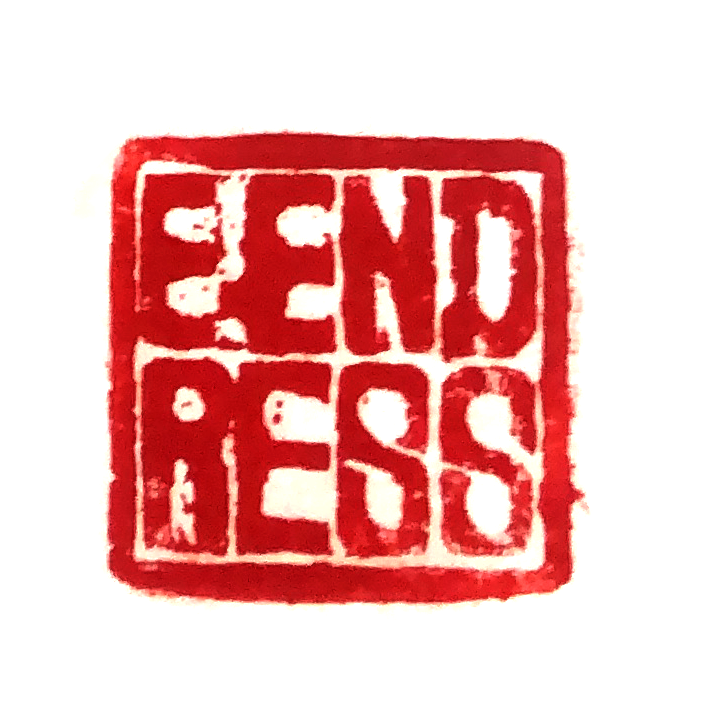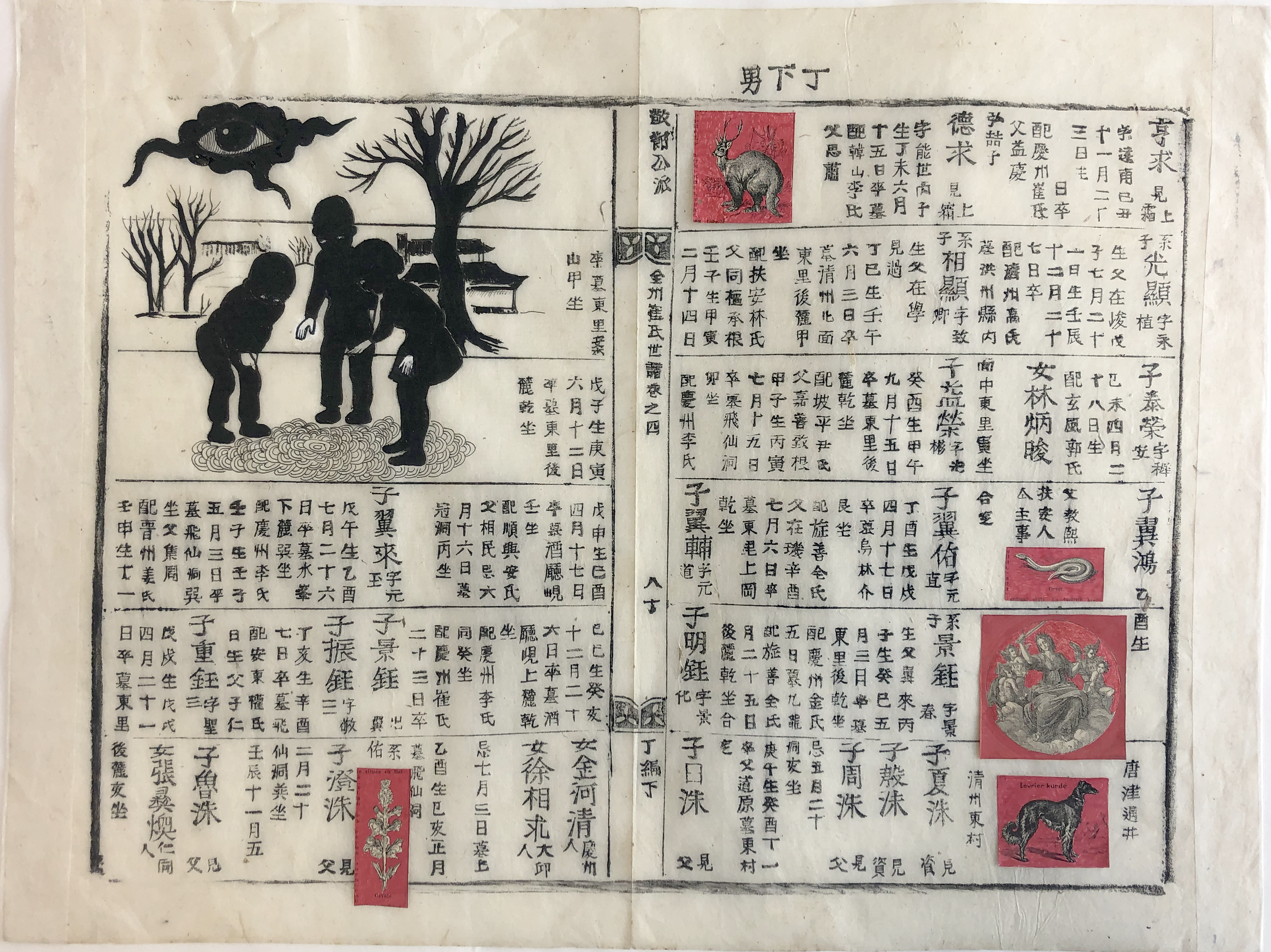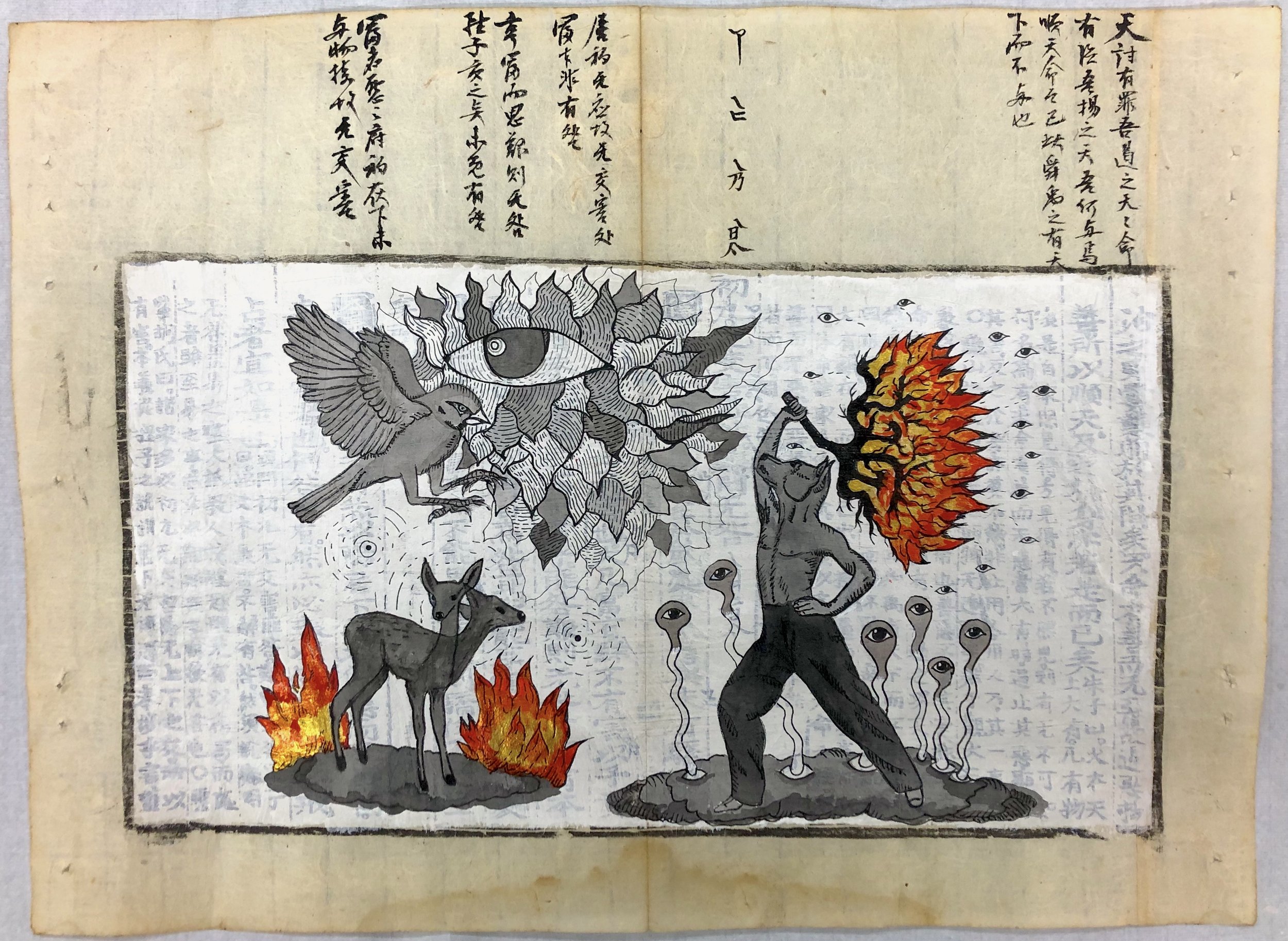
Found Records
This series of drawings have a starting point, found “Hanji” paper from old Korean books. The books were originally written in ancient Chinese, a standard form of disseminating knowledge before King Sejong createdb“hangul” (Korean language) in the mid-fifteenth century. Hangul was developed as a democratic form of spreading knowledge across social classes. It was initially resisted by the Korean elite because it democratized knowledge and challenged the power structure in which only the elite had the ability to read and write. The pages used for the drawings range from 200 to 300 years old, from books bound in “Seonjang” book format (which means thread binding in Korean).
The following series all use the same found “hanji” strategy. Each series adopt one book and is limited by the number of pages of that original old book.
Han·ji
Hanji is the name of the handmade paper produced in ancient Korea from the 1st century BCE. Hanji is made from the inner bark of mulberry, a tree native to Korea that grows well on its rocky mountainsides, known in Korean as dak. Hanji is a very reputable paper among Asians, and it is famous for its durability, it says to last for 1000 years.
______________________________________________________
The following series uses hanji paper from old educational books found on the market in Seoul. The books range from 100 to 300 years old. The books were written in hanja “true letters”. After 1894, hanja vocabulary was based on Korean words of Chinese origin, which were called hanmun, “a foreign script.”
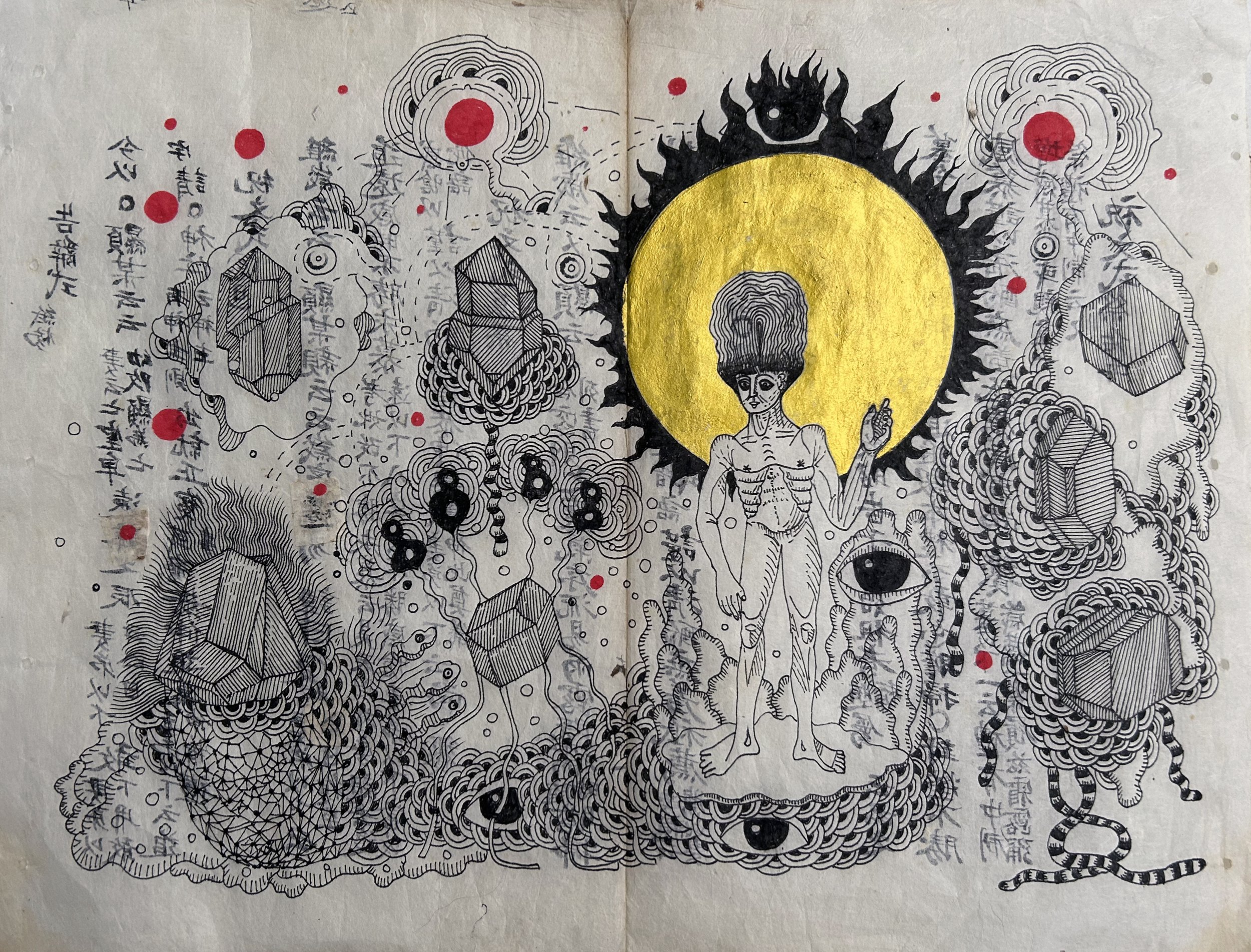




Mapping the Way Home / Series / Found Hanji Paper and ink / 13 x 17.5 in. / 2024
Book nº3 / Book on Tales / series Archive of daily occurrences / Based on: Daily life occurrences Ink on Hanji 9 pages 30 x 40 cm
each is a series of drawings created in response to every day upon my arrival in South Korea. It registers iconography, patterns, and events of my life while negotiating daily occurrences. (series 9 images, ink on Hanji).
Book nº4 / Ephemeral Textbooks / Ink on Hanji 9 pages 30 x 40 cm each
Based on ink drawings from 1st and 2nd-grade textbooks, GukEo 1-1 (Korean 1-1) was initially published in 1957. This project transit into the ideas already explored in the series “Acts of Knowledge”; the relationship of knowledge and power. The pages in this art project are constructed with layers of iconography. The educational book Korean 1-1, present during the Third Republic of Korea, manifests the educational ideals of “national revitalization, creating self-reliant individuals, promulgating a new cooperative image of the nation” Yang (loc. cit.) of the dictatorial government of Park Chung-hee. This series holds layers of illustrations collaged from western dictionaries, resembling “dojang” (Korean seals), creating a multilayered project.
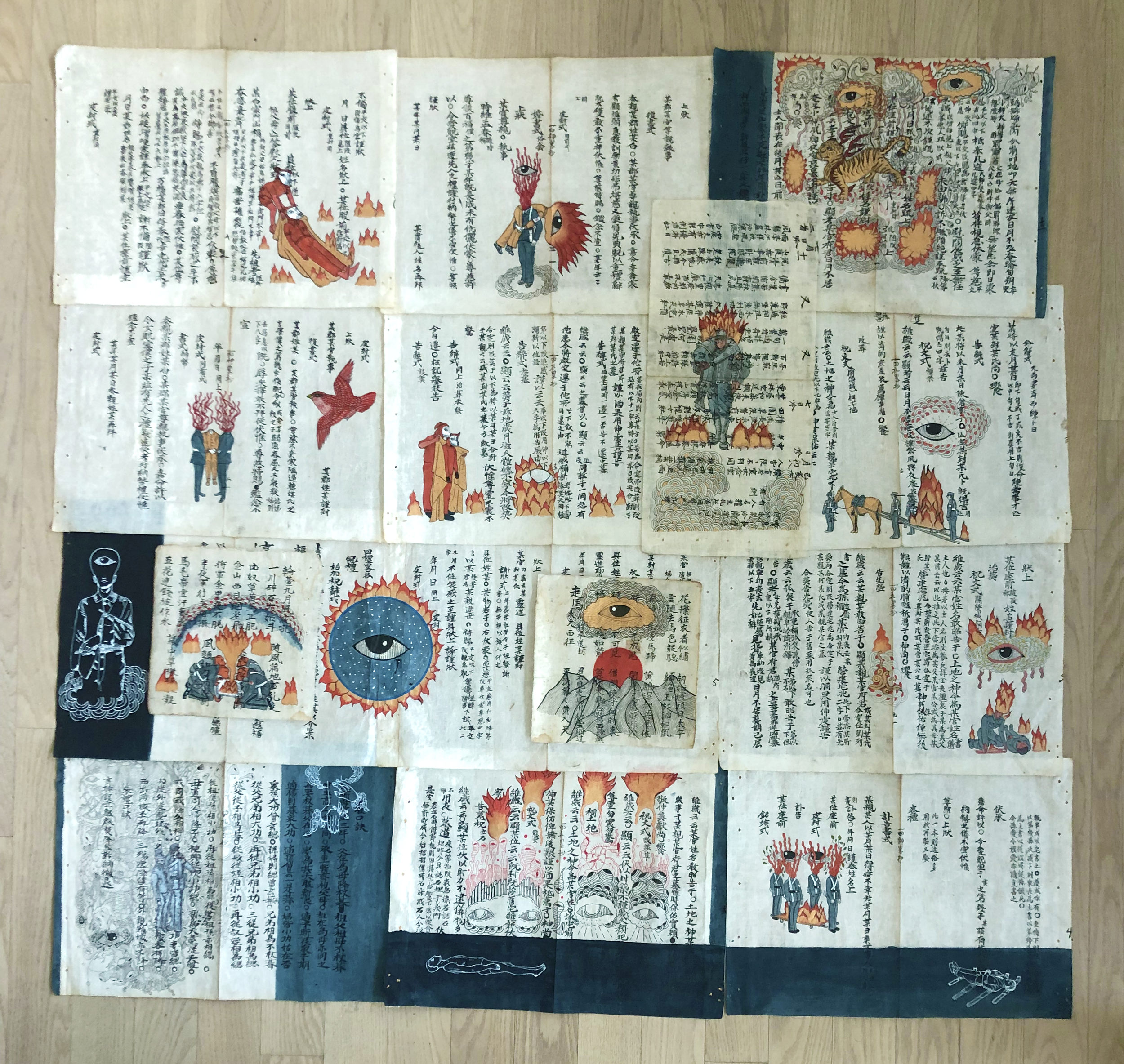






Book nº1 Loose manual of how to rescue somebody Based on: First aid Manuals / 120 x 120 cm Ink on Hanji
They are a series of drawings created using primary images from first aid manuals and Tigers (a symbol of strength and power and often seen as the guardian spirit in Korea). The project remix the biographical iconography of the artist, like the fire and the eyes, elements that often appear in the artist’s work. First aid manuals are knowledge that teaches how to respond to somebody else wounds and provide primary care to somebody in need. First aid manuals are a democratic concept that expresses empathy for an “other” in need.
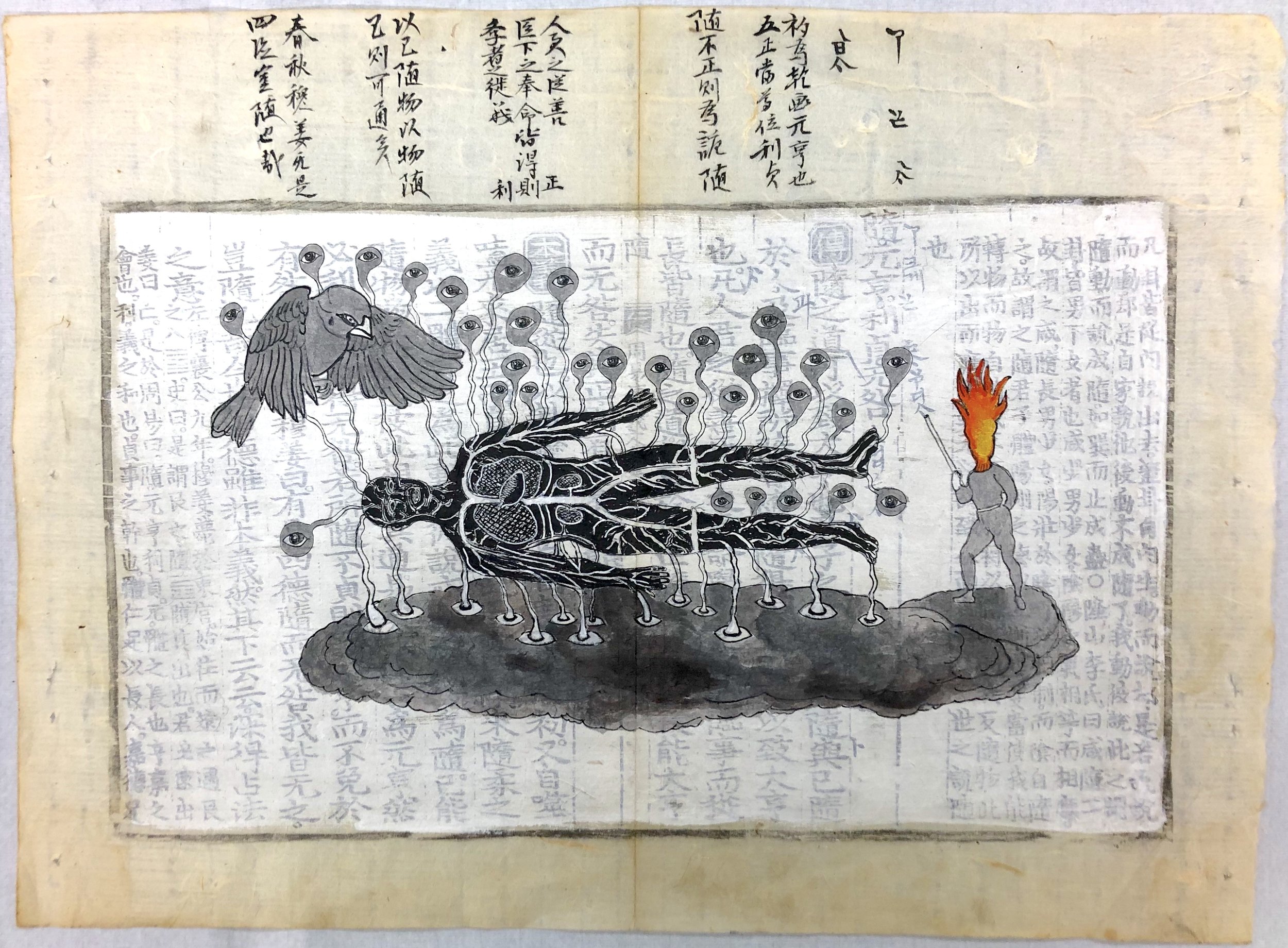

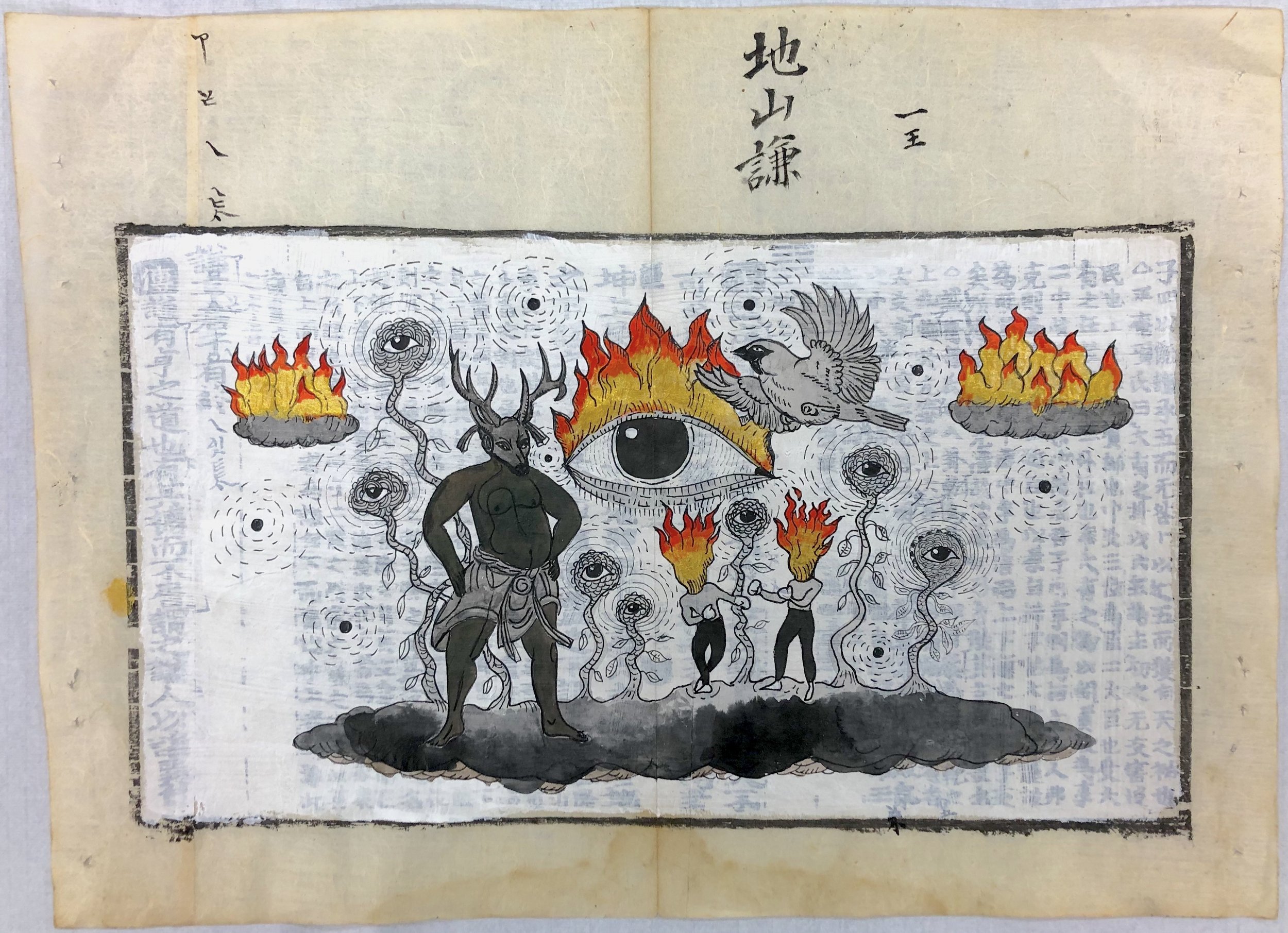
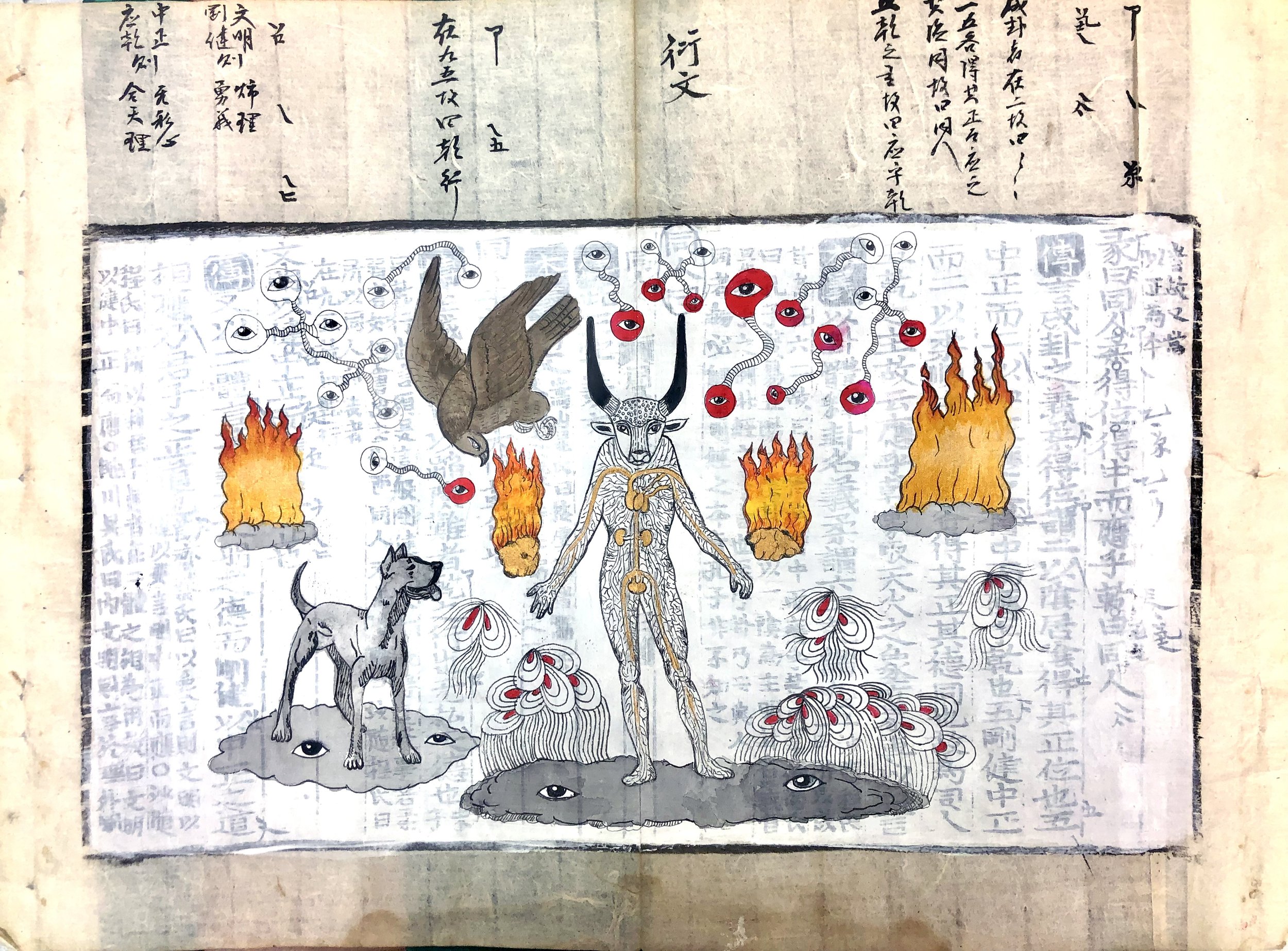
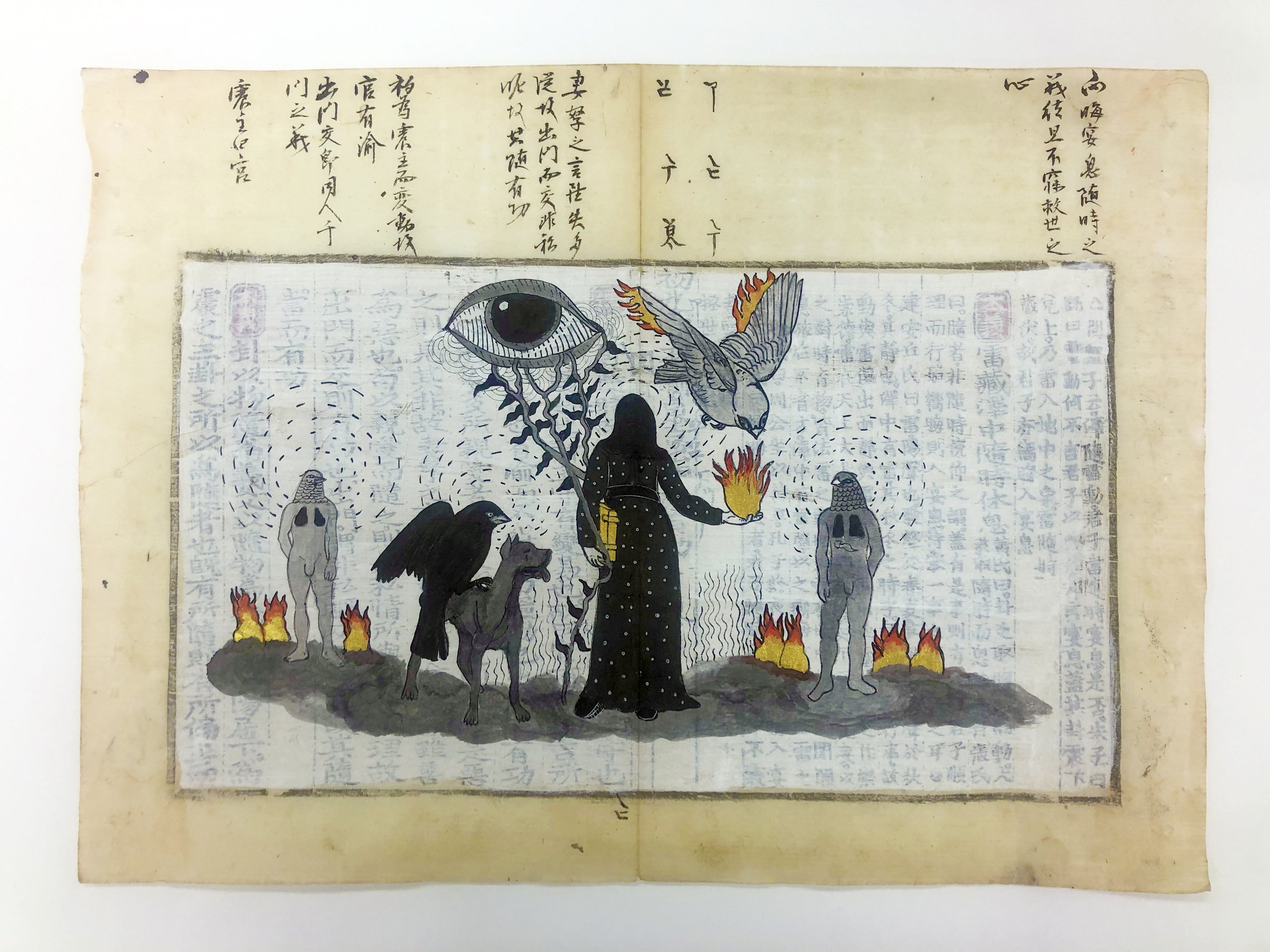

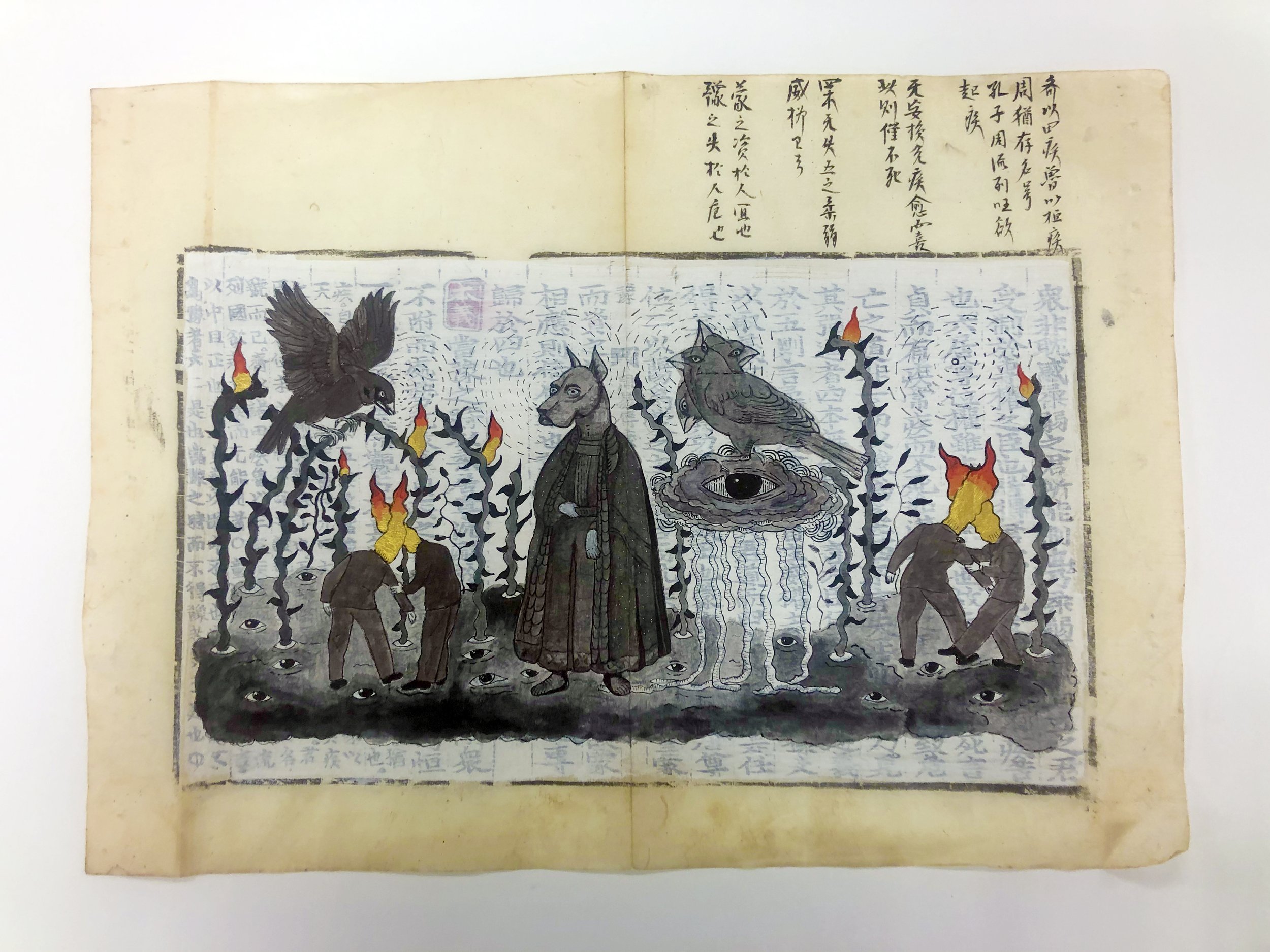

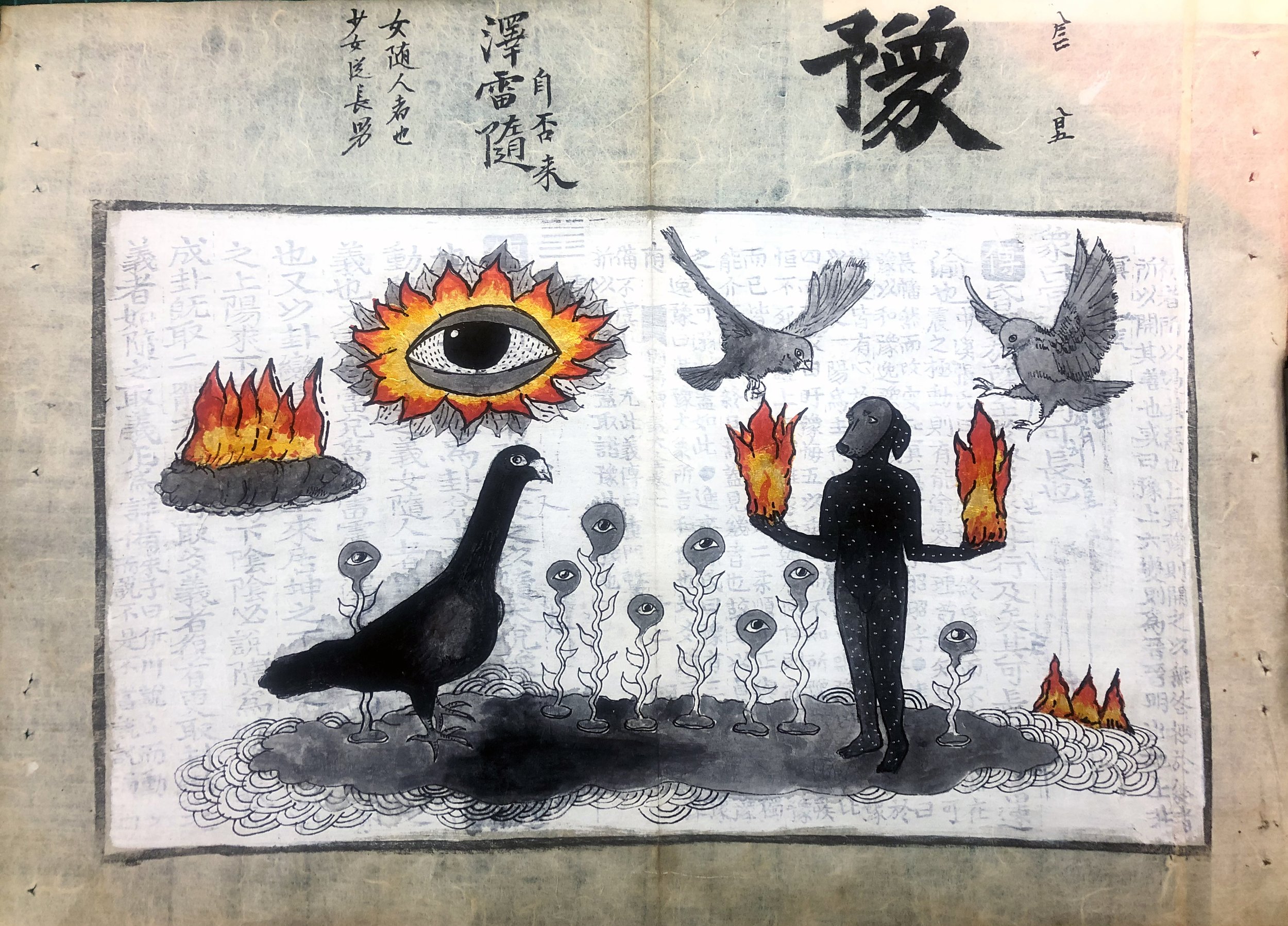
Book nº5 / Book on Tales / series / in progress / Archive of daily occurrences / Based on: Daily life occurrences / Ink on Hanji 30 x 40 cm each
